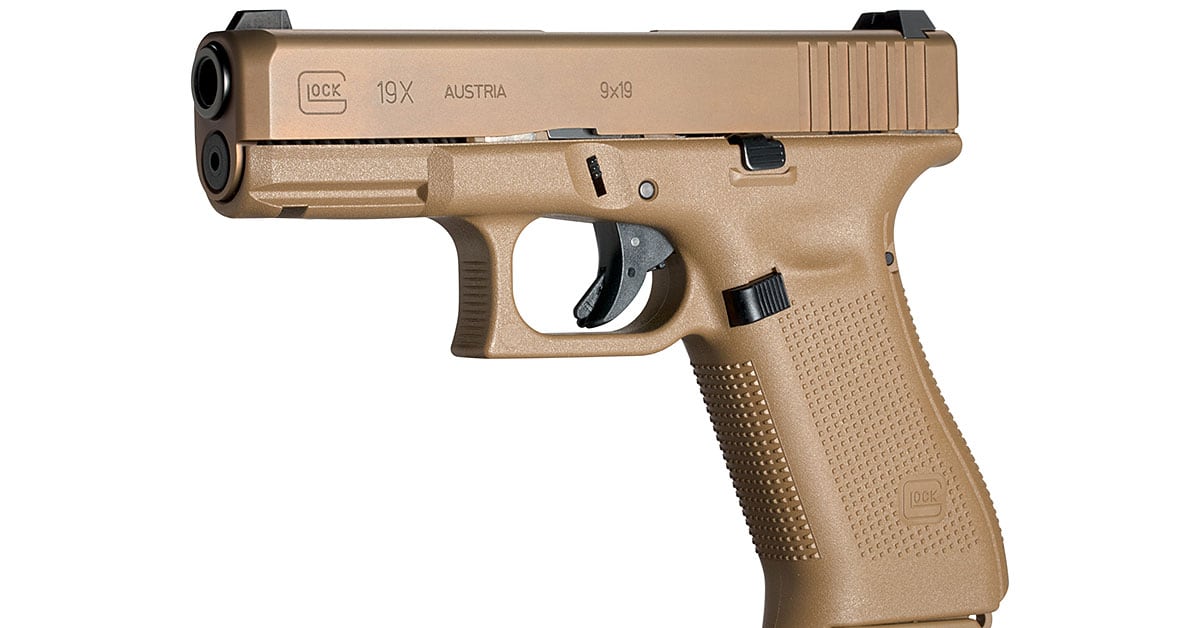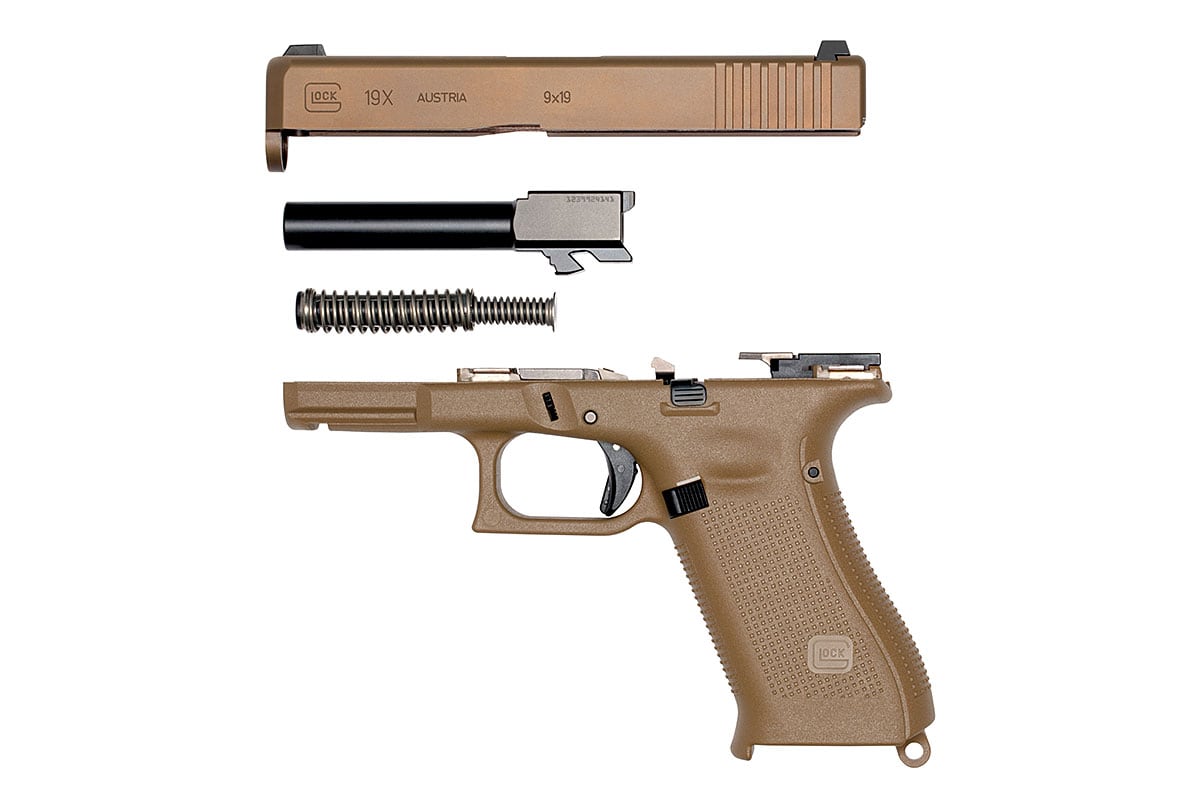It was a battle that lasted years — one that pitted a titan of the gun-making world that outfits most of the nation’s police against a scrappy upstart that has earned the affection of some of the world’s most elite counter-terrorist units.
But in the end, it was Exeter, New Hampshire-based Sig Sauer that beat out the ballistic behemoth of Austrian-stalwart Glock for the $580 million contract to replace the Army’s entire stock of Beretta M9 handguns — a firearm that’s been the standard-issued pistol for the entire U.S. military since the mid-1980s.
Through protests and PR missteps, the world wondered what gun Glock had submitted to the Army for testing to win the so-called “Modular Handgun System” program. The notoriously secretive Glock let little slip in the year or so of testing. That left gun nuts wondering what the mystery weapon was that had come up short.
RELATED

Now, GearScout can finally reveal the handgun Glock put together to vie for soldiers’ last-ditch iron. And the shape that new pistol took may surprise Glock lovers and haters alike — and for very different reasons.
The commercial variant to be released to the public in early January is dubbed the “Glock 19X.” Essentially mating a Glock 19 barrel and slide with a Glock 17 frame, the new 19X is the company’s first “crossover” handgun that melds the best of both designs into a do-it-all platform.

“It’s almost like a [1911] Commander-style situation where you’ve got the shorter barrel with the full-sized grip frame,” said Bob Radecki, Glock’s national sales manager.
The only real difference between the civilian G19X and the Army submission is the lack of external safety on the commercial one. Otherwise, the G19X combines all the technology included in the Glock Gen. 5 series of pistols — with upgraded internal components, a “marksman barrel” and an improved non-corrosive slide finish.
Glock only submitted the G19/17 hybrid for the Modular Handgun System competition, while Sig offered a handgun that could swap out two different frame sizes and barrel/slide combinations to make a full-sized handgun and one more suitable for concealment.
The MHS program resulted in the full-sized M17 handgun and the more compact M18.

Glock officials argue the company followed the terms of the program, which they say specified minimum and maximum sizes and magazine capacities, not an ability to switch out frames, barrels and slides. The G19X, they say, fits within the letter of the law for the MHS.
“The G19X met all the physical and dimensional requirements — maximum and minimum — for both the compact and the standard-sized pistols,” said Glock USA chief Josh Dorsey. “That is why the we went the way we went. Because we had the same capability that answered both sets of requirements in one material solution.”
Glock says the G19X will be available in stores for commercial release in late January.
Christian Lowe is senior editor for digital operations and is a competitive pistol and rifle shooter.




